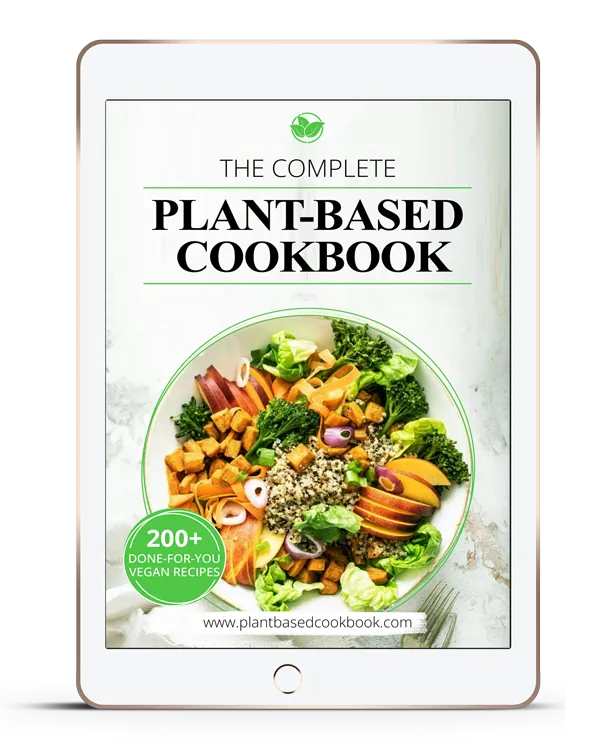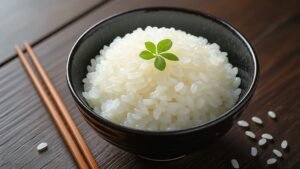Ever pondered about your true innocence? The Rice Purity Test might hold the key. This online survey has swept through social media, intriguing many with their “purity” score.
On TikTok, I’ve seen numerous users sharing their outcomes, sparking discussions and light-hearted debates. But what is this test, and why has it gained such widespread popularity?
The Rice Purity Test is straightforward: it’s a self-assessment questionnaire that gauges your life experiences. It spans from tame to daring, touching on subjects that might cause you to blush or chuckle.
It’s simple to take the Rice Purity Test online, and it’s free. It serves as a delightful way to ponder over your choices and perhaps uncover new insights about yourself. Yet, it’s essential to keep in mind that your score doesn’t encapsulate your entire identity!
Table of Contents
ToggleThe Origins and History of the Rice Purity Test
The tradition of the rice purity test at universities has a deep history, tracing back to the 1960s. It’s intriguing to see how this quiz has grown, becoming a cultural icon that still draws interest today.
Birth at Rice University
At Rice University in Houston, Texas, the rules for the rice purity test were first laid out. Students devised it to measure their life experiences against those of their peers. It swiftly became a campus hit, encouraging dialogue and bonding among students.
Evolution and Widespread Adoption
As news of the test spread, it was taken up by other universities. It turned into a social event and sometimes a playful challenge. The questions have been updated to reflect shifting values and beliefs. Many schools have even tailored their own versions, making the test a part of their unique culture.
Modern Resurgence on Social Media
Now, the Rice Purity Test is thriving on social media, especially on TikTok. Gen Z users have taken to it, creating challenges and sharing their scores. This has led to new versions, like the “innocence test,” which references apps like Tinder. Its ongoing popularity highlights how it connects with young people as they navigate their experiences and identities.
| Era | Key Features |
|---|---|
| 1960s | Original version at Rice University |
| 1980s-1990s | Spread to other universities |
| 2000s | Online versions emerge |
| 2020s | Social media resurgence, updated questions |
What is the Rice Purity Test?
The Rice Purity Test is a widely popular online survey that has captured the attention of many. It’s been trending on social media, sparking curiosity about its nature. Let’s explore this fascinating questionnaire in detail.
Overview of the 100-question survey
This test comprises 100 questions aimed at evaluating your life experiences. It spans a broad spectrum, from harmless activities to more daring ones. As you navigate through the rice purity test questions, you’ll reflect on your past decisions and actions.
Topics covered in the test
The test delves into various life aspects, including:
- Sexual experiences
- Drug and alcohol use
- Academic integrity
- Personal values
- Social interactions
Scoring system and interpretation
Upon completing the questions, you’ll receive a score from 0 to 100. This score, calculated by the rice purity test calculator, reflects your “purity” level. A high score indicates a relatively sheltered life, while a low score suggests a more varied set of experiences.
| Score Range | Interpretation |
|---|---|
| 90-100 | Very innocent |
| 70-89 | Mostly innocent |
| 50-69 | Average experiences |
| 30-49 | More adventurous |
| 0-29 | Very experienced |
It’s important to remember that the Rice Purity Test is purely for entertainment purposes. It’s not a scientific evaluation of your character or value. Approach it with a light heart, but don’t let your score dictate your self-worth.
How to Take the Rice Purity Test
Taking the rice purity test online is a straightforward process. I’ll guide you through the steps to complete this popular self-assessment quiz.
First, find a reputable website offering the test. Many sites provide free access to the full 100-question survey. Once you’ve located a trusted source, follow these steps:
- Open the quiz page
- Read each question carefully
- Check the box if the statement applies to you
- Leave it unchecked if it doesn’t
- Continue until you’ve answered all 100 questions
After completing the quiz, the website will calculate your score automatically. This number represents your “purity” level, with higher scores indicating less experience in various life situations.
| Score Range | Interpretation |
|---|---|
| 100-98 | Very pure |
| 97-94 | Pure |
| 93-77 | Moderately pure |
| 76-45 | Somewhat experienced |
| 44-0 | Very experienced |
Remember, the rice purity test is meant for fun and self-reflection. Your score doesn’t define your worth or character. Feel free to take the test alone or with friends for a lighthearted social activity.
Understanding Your Rice Purity Score
After taking the rice purity test, you might wonder what your score means. Let’s explore the numbers and their implications across various groups.
Average Scores by Age and Country
Rice purity scores show significant variation based on age and location. Young teens generally score higher, while adults tend to have lower scores. In the U.S., scores for those under 18 average around 91, falling to about 85 for those under 25. As individuals age, scores typically decline, with the overall average in the mid-60s.

Score Distribution and Statistics
The rice purity test calculator uncovers a fascinating pattern. Scores tend to follow a normal distribution, with most individuals clustering in the middle range. Here’s a detailed breakdown of score ranges:
| Score Range | Percentage of Test-Takers |
|---|---|
| 90-100 | 15% |
| 70-89 | 30% |
| 50-69 | 35% |
| 30-49 | 15% |
| 0-29 | 5% |
What’s a “Good” Score?
There’s no one-size-fits-all “good” rice purity score. It’s highly subjective, influenced by personal values. For young adults under 25, a score between 85-91 is often considered balanced. However, it’s essential to remember that the test is purely for entertainment purposes. It does not define your character or worth. What truly matters is your comfort with your experiences and choices.
The Cultural Impact and Controversy Surrounding the Test
The Rice Purity Test has swept through social media, igniting trends and debates. Its popularity, especially on TikTok, is on the rise. As the rice purity test explained becomes a staple in popular culture, it transcends its original purpose. It’s now more than a simple survey.
Social Media Trends
People share their scores, fueling viral challenges. This has led to a plethora of videos and posts, with individuals comparing scores and discussing the test’s rules. It’s intriguing to observe how a basic questionnaire can generate such widespread attention.
Ethical Considerations
Despite its widespread adoption, the test has faced backlash. Critics argue it fosters unhealthy competition or nudges individuals towards certain behaviors. Debates have erupted over whether it perpetuates harmful stereotypes or breaches privacy.
Alternative Versions
New iterations of the test have surfaced to address these concerns and align with evolving societal values. The “innocence test” is one such adaptation, incorporating contemporary references. These updates aim to broaden the test’s appeal and relevance to today’s youth.
| Version | Focus | Target Audience |
|---|---|---|
| Original Rice Purity Test | General experiences | College students |
| Innocence Test | Contemporary references | Teenagers and young adults |
| Digital Purity Test | Online behavior | Internet users |
The test’s evolution continues to prompt discussions on personal values and experiences in our digital era.
Conclusion
The Rice Purity Test has evolved significantly since its inception at Rice University. Now, it’s a widely taken online quiz that encourages reflection on life experiences. While engaging with the test can be enjoyable, it’s essential to recognize its limitations. It’s not a scientific instrument. Your rice purity score does not encapsulate your identity or value.
Recently, the test has gained traction on social media, with many sharing their scores. It’s fascinating to observe how the Rice Purity Test has transitioned into the digital realm. However, I urge caution regarding the disclosure of personal details online. The test serves as a playful mechanism for introspection, not a basis for evaluation.
Ultimately, the Rice Purity Test represents one facet of evolving social norms. It’s intriguing to note the varying responses across generations. If you opt to participate, approach it with a sense of amusement. Prioritize authenticity and make decisions aligned with your personal beliefs and values.
FAQ
What is the Rice Purity Test?
The Rice Purity Test is a self-assessment survey from the 1960s at Rice University. It evaluates a person’s “innocence” through 100 questions. These questions cover sexual behavior, drug and alcohol use, and personal values.
Where did the Rice Purity Test originate?
It was created at Rice University in Houston, Texas, during the 1960s. Now, it’s used by universities across the U.S. as a social activity or a joke.
What topics are covered in the Rice Purity Test?
The test explores sexual behavior, drug and alcohol use, academic honesty, and personal values. Its questions aim to be provocative and explicit.
How is the Rice Purity Test scored?
Points are given based on perceived “purity” or innocence. Higher scores mean more purity. A 100 score means little experience, while a 0 score indicates extreme experiences.
Where can I take the Rice Purity Test online?
Online versions of the test are available on many websites. Users can go through the 100 questions, marking those that apply to them.
What is considered a “good” Rice Purity score?
Scores between 85 and 91 are seen as “good” for those under 25. The average for those under 18 is 91.12, and the overall average is 63.77.
How has the Rice Purity Test evolved over time?
It has gained popularity on social media, especially on TikTok among Gen Z. New versions and adaptations have been made, addressing ethical issues and including modern references.






